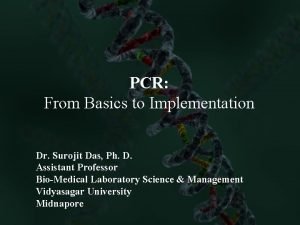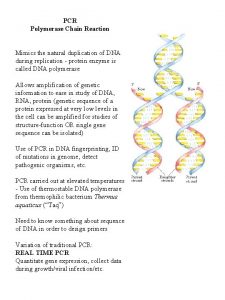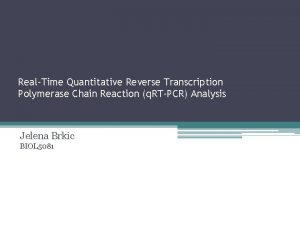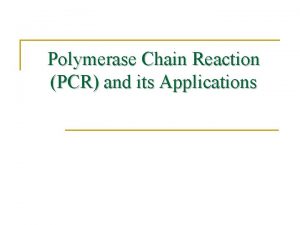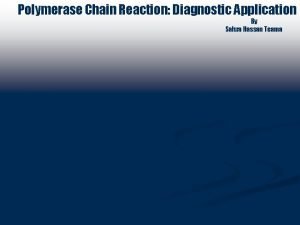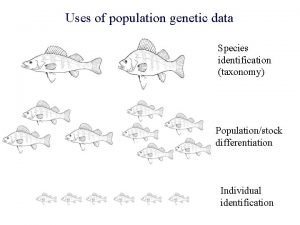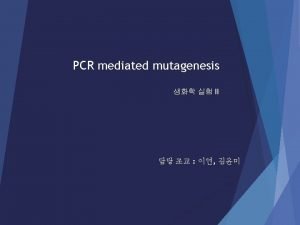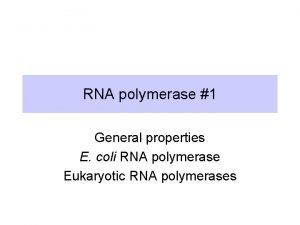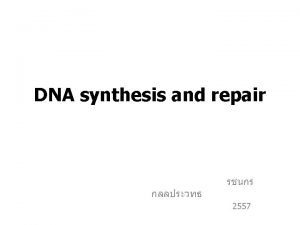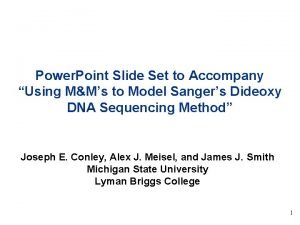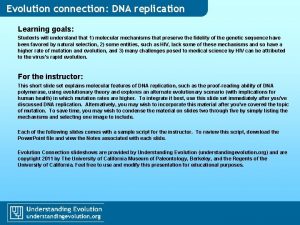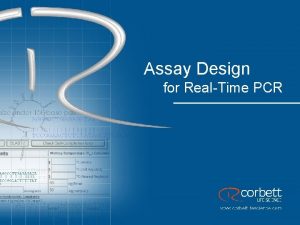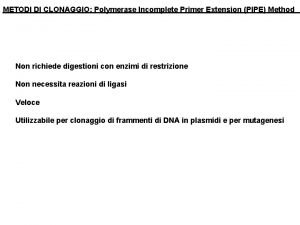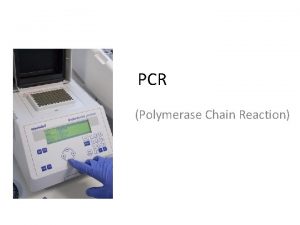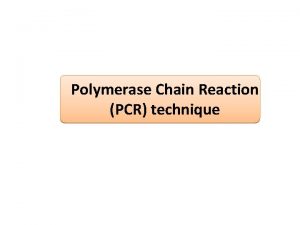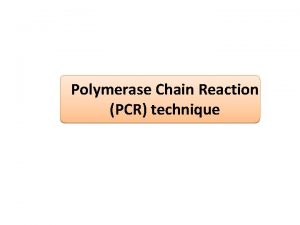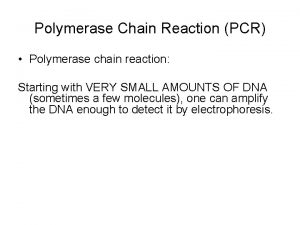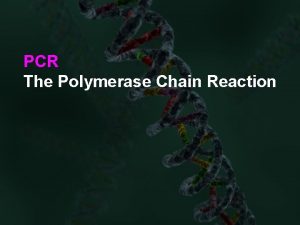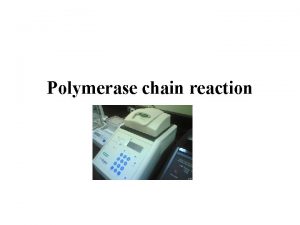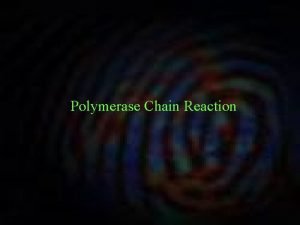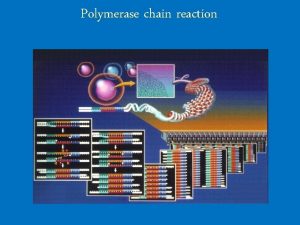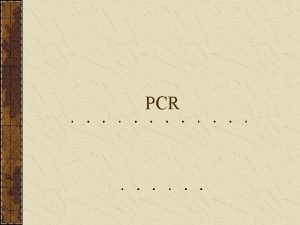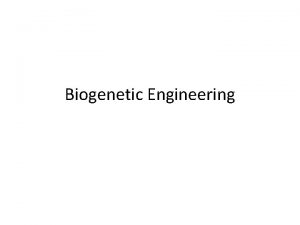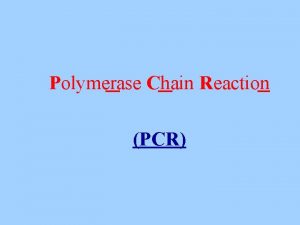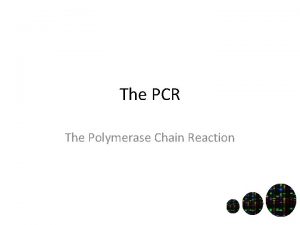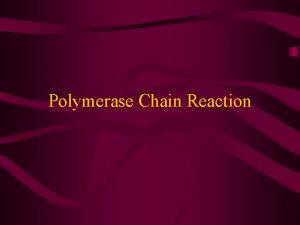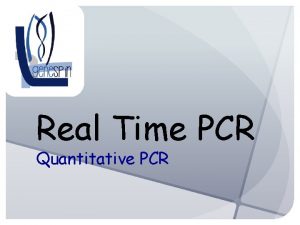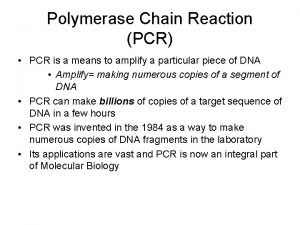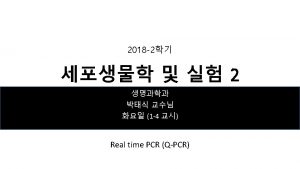Polymerase chain reaction PCR Outline PCR Definition PCR




















- Slides: 20

Polymerase chain reaction (PCR)

Outline PCR Definition PCR History PCR Steps References

Outline PCR Definition PCR History PCR Steps References

PCR Definition Polymerase chain reaction (PCR) is a technique used in molecular biology to amplify a single copy or a few copies of a segment of DNA across several orders of magnitude, generating thousands to millions of copies of a particular DNA sequence.

Outline PCR Definition PCR History PCR Steps References

PCR History In 1983, Kary Mullis, Ph. D, a scientist at the Cetus Corporation, conceived of PCR as a method to copy DNA and synthesize large amounts of a specific target DNA. Over the next two years, a team of Cetus scientists that recognized the potential impact PCR could have on molecular biology, researched, refined and made theoretical process a reality. Kary Mullis

PCR History The team presented for the first time in 1985 at the American Society for Human Genetics annual meeting. Later that year, Science, a journal of the American Association for the Advancement of Science 3, reported the results in the firstever publication of the process

Outline PCR Definition PCR History PCR Steps References

PCR Steps There are six main steps in PCR : 1. Template DNA denaturation assessment 2. DNA denaturation considerations 3. Primer annealing optimization 4. Primer extension considerations 5. PCR cycle number determination 6. Final extension evaluation

1. Template DNA denaturation assessment The initial denaturation step is carried out at the beginning of PCR to separate the double-stranded template DNA into single strands so that the primers can bind to the target region and initiate extension. Complete denaturation of the input DNA helps ensure efficient amplification of the target sequence during the first amplification cycle. Furthermore, the high temperature at this step helps inactivate heat-labile proteases or nucleases that may be present in the sample, The initial denaturation step is commonly performed at 94– 98°C for 1– 3 minutes

1. Template DNA denaturation assessment

2. DNA denaturation considerations After the initial denaturation step, subsequent PCR cycles begin with a separate denaturation step that lasts 0. 5– 2 minutes at 94– 98°C. As with the initial template DNA denaturation step, the time and temperature should be optimized according to the nature of the template DNA, DNA polymerase, and buffer components.

3. Primer annealing optimization In this step, the reaction temperature is lowered to allow binding of the primers to the target DNA. Often, incubation time of 0. 5– 2 minutes is sufficient for primer annealing. The annealing temperature is determined by calculating the melting temperature (Tm) of the selected primers for PCR amplification. A general rule of thumb is to begin with an annealing temperature 3– 5°C lower than the lowest Tm of the primers.

3. Primer annealing optimization primer

4. Primer extension considerations After primer annealing, the next step in PCR is to extend the 3′ end of primers, complementary to the template. In this step, 5′→ 3′ polymerase activity of the DNA polymerase incorporates d. NTPs and synthesizes the daughter strands. The reaction temperature is raised to the optimal temperature of the enzyme for its maximal activity, which is generally 70– 75°C for thermostable DNA polymerases.

5. PCR cycle number determination PCR steps of denaturation, annealing, and extension are repeated (or “cycled”) many times to amplify the target DNA. The number of cycles is usually carried out 25– 35 times but may vary upon the amount of DNA input and the desired yield of PCR product

6. Final extension evaluation The final extension step follows completion of the last PCR cycle. In this step, the PCR mixture is incubated at the extension temperature (generally 72°C) for a final 5– 15 minute period. The duration of this final step also depends on the amplicon length and composition and should be optimized to ensure full-length polymerization and good yield of the target DNA

PCR Steps

Outline PCR Definition PCR History PCR Steps References

References www. presentationszone. com www. wikibedia. org https: //molecular. roche. com www. thermofisher. com
 Applicationof pcr
Applicationof pcr Polymerase chain reaction
Polymerase chain reaction Polymerase chain reaction
Polymerase chain reaction Polymerase chain reaction application
Polymerase chain reaction application Pcr phases
Pcr phases Polymerase chain reaction
Polymerase chain reaction The three steps of polymerase chain reaction
The three steps of polymerase chain reaction Food chain sequence
Food chain sequence Rna polymerase 1 2 3
Rna polymerase 1 2 3 Lagging strand
Lagging strand Dna prokaryot
Dna prokaryot Replication
Replication Dna replication eukaryotes
Dna replication eukaryotes How many dna polymerase in eukaryotes
How many dna polymerase in eukaryotes Types of dna polymerase in eukaryotes
Types of dna polymerase in eukaryotes Dna polymerase
Dna polymerase Rna polymerase
Rna polymerase Dna polymerase
Dna polymerase Taqman gene expression assay
Taqman gene expression assay Rna polymerase
Rna polymerase Clonaggio
Clonaggio
